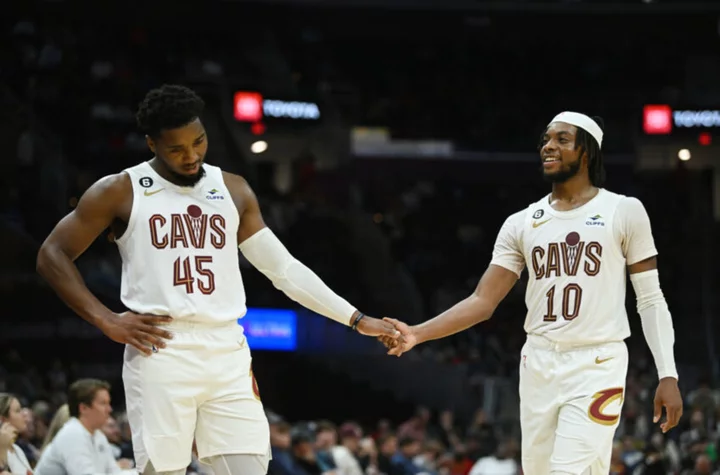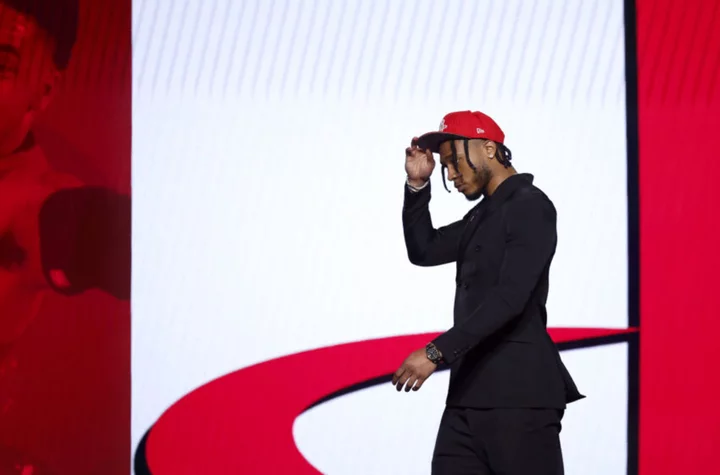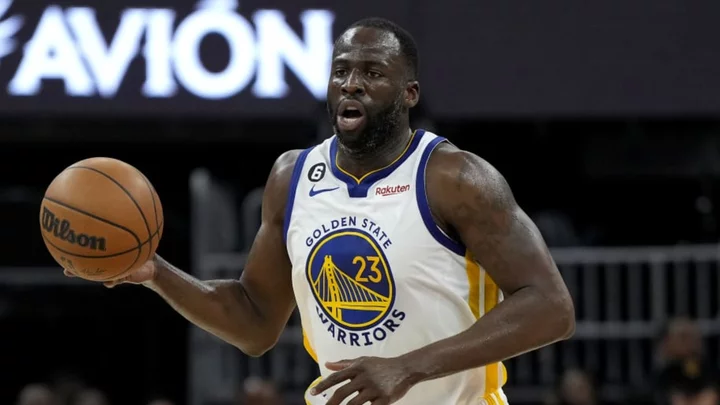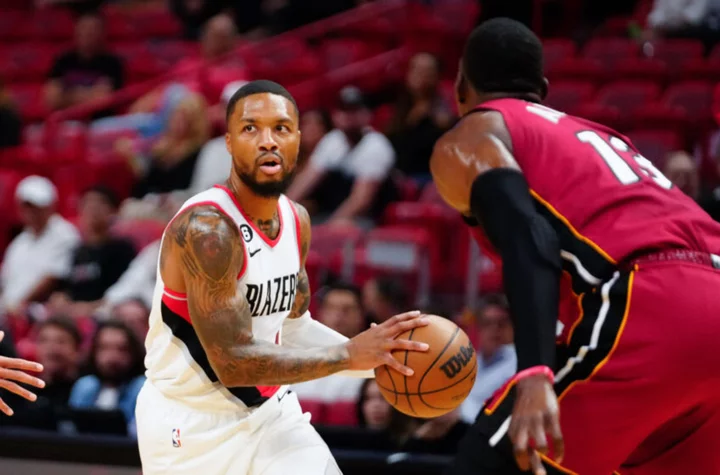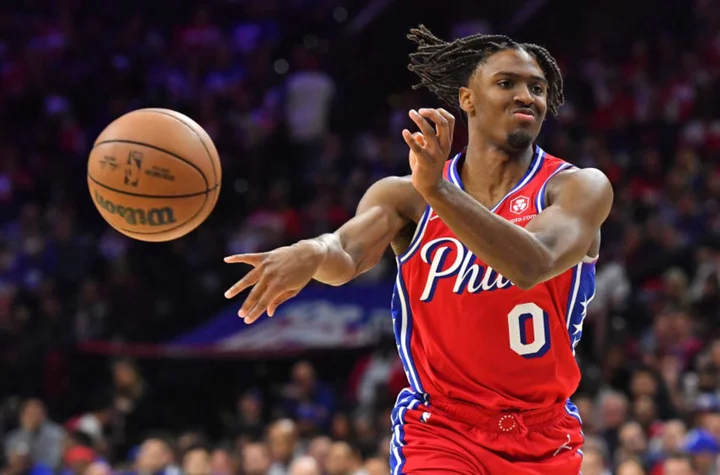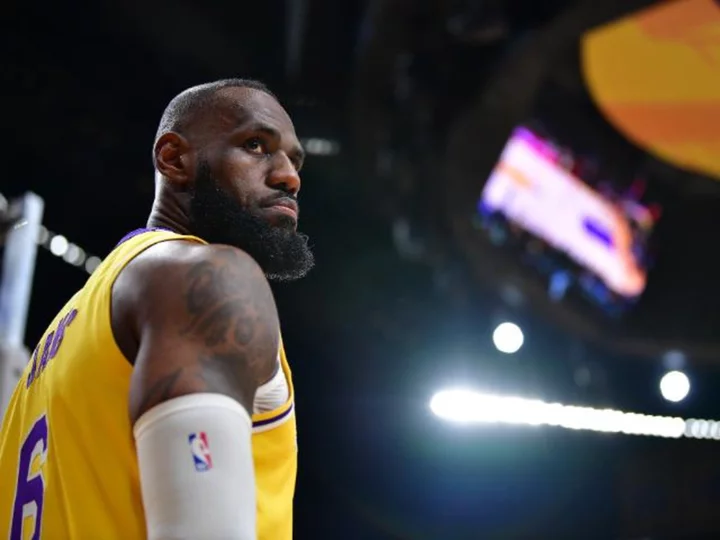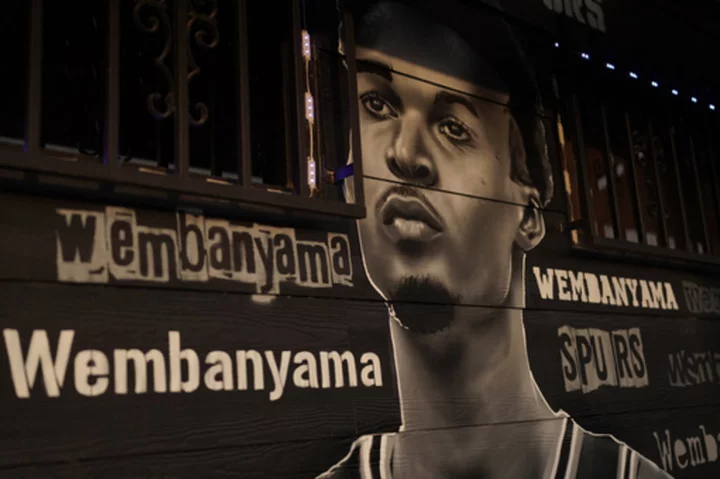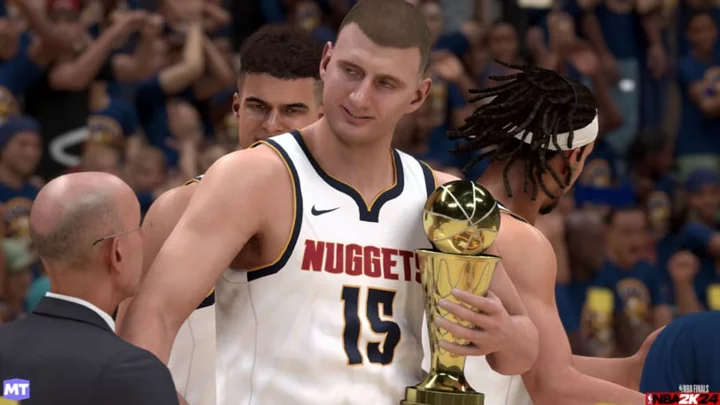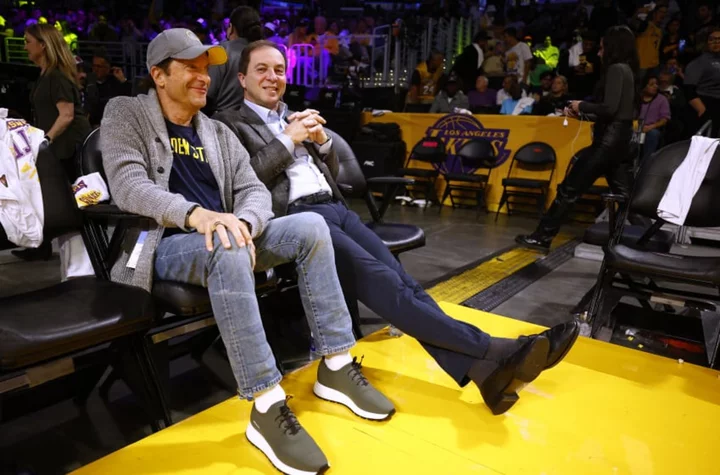The Cleveland Cavaliers are bonafide contenders on paper, but last season ended with a rather embarrassing first-round exit. Now it's up to J.B. Bickerstaff and company to avoid the same outcome in 2023-24.
The Cleveland Cavaliers finished last season with the fifth-best record in the NBA. By every discernible metric, the Cavs were right on the precipice of contention, if not fully in the contenders circle. Then the playoffs arrived and Cleveland was dispatched in five games by an extremely flawed Knicks team.
Credit where credit is due — the Knicks were deep, balanced, and well-coached — but the Cavs shouldn't have lost that series. So why did they?
A lot of the blame was rightfully pinned on J.B. Bickerstaff. It's not often that Tom Thibodeau runs circles around his opponent in the playoffs, but he absolutely did in the first round. Some of the blame belongs to the players, of course. Donovan Mitchell and Darius Garland could have played better in critical spots. The Jarrett Allen-Evan Mobley frontcourt posed serious issues. And, of course, there's the front office. Cleveland's depth paled in comparison to New York's depth. That was the real driving force behind the Knicks' victory.
Cleveland made a valiant effort to address certain issues over the summer. Bickerstaff remains as head coach, and he probably deserves another go-around after last season. The players love him. The twin towers remain in the starting lineup, but the Cavs are popping up in trade rumors involving Jarrett Allen. There could be a significant move on the horizon.
Most of the summer changes, however, have been marginal. Small additions to the periphery of the depth chart to strengthen the second unit and better balance the offensive shot profile. Here's what Bickerstaff is working with rotationally entering the new season.
Cleveland Cavaliers starting point guard: Darius Garland
Darius Garland doesn't get the praise he deserves. Last season was a complete offensive masterclass from the 23-year-old out of Vanderbilt. Garland adjusted his approach to accommodate Donovan Mitchell, but he still averaged 7.8 assists (to only 2.9 turnovers) while scoring 21.6 points on highly impressive .462/.410/.863 splits.
Garland is a limited defender, which is the ultimate cap on his NBA ceiling. Offensively, there's not much going against him at the moment. He's a master of the pick-and-roll, constantly shifting gears off the dribble to manipulate his defender and generate advantages. He's absolute money on pull-up jumpers or floaters. He also reads the floor at a high level and regularly finds open teammates spotting up on the perimeter or ducking toward the rim.
Off the ball, Garland offers ample value as a spot-up shooter. His willingness to relocate and move without the ball was key to unlocking a winning dynamic with Mitchell in the backcourt. Defenses faced a constant conundrum attempting to keep Mitchell out of the paint while also compensating for Garland's dynamism attacking off the catch (and vice versa).
He's a perennial All-Star candidate in the East at this point. It can be difficult to win at the highest level with small backcourts (see: Lillard and McCollum in Portland), but the Cavs have the luxury of two elite rim protectors. Improvement to the perimeter defense around Mitchell and Garland is imperative, but the front office addressed those concerns in the offseason. How well is up for debate until the product is unveiled, but the Cavs' defense should be better overall.
Primary backup point guard: Donovan Mitchell
The Cavs should stagger Mitchell and Garland, keeping one on the floor at all times. Mitchell has grown immensely over the last couple years as a playmaker for others, consistently leveraging his gravity as a driver to generate looks for teammates. He's better suited to defending point guards because of his size, too.
Other players who could receive minutes at point guard: Ricky Rubio
It was tough sledding for Ricky Rubio last season in his return from a knee injury, but we have seen Rubio impact winning at a considerable level when he's right. The 3-point shot has come around in a big way in recent years, he's a tremendous positional defender, and the playmaking acumen has never been in doubt. Expect him to carve out a consistent role.
Cleveland Cavaliers starting shooting guard: Donovan Mitchell
Donovan Mitchell fully entered NBA superstar territory in his first season with the Cavs. He remains limited on defense — thus, the concerns tied to his pairing with Garland — but there simply aren't many players who can match Mitchell's impact on the offensive end right now.
Blessed with one of the most explosive first steps in the league, Mitchell continues to shred defenses by getting downhill and pressuring the rim. He has the strength to finish through contact, the shiftiness to evade shot-blockers, and the bounce to go over the top when all else fails. There are few more fearsome sights for NBA defenders than Mitchell gunning toward the rim with a head of steam.
Mitchell's progression as a playmaker for others has cemented his stardom. There aren't many ways to take him out of the game. Bring a double and he will beat you with a pass. Give him too much space on the perimeter and he's one of the best pull-up shooters in the NBA. Mitchell averaged 28.3 points and 4.4 assists on .484/.386/.867 splits. Defenses can't shift the entire scheme to stop Mitchell either, because that only opens up the floor for Garland.
There are questions aplenty about Mitchell's future with the Cavs. It will be important for Cleveland to make the requisite improvements around Mitchell this season. The odds of him signing an extension multiply a thousandfold if Cleveland can make a deep postseason run. That is absolutely in the cards for this group, but Bickerstaff, the front office, and the supporting cast all have to carry their weight.
Primary backup shooting guard: Caris LeVert
Caris LeVert bounced between the starting five and the second unit last season. He ended up starting games in the postseason, which didn't go particularly well for the Cavs. LeVert is a tremendously gifted athlete and scorer, blessed with impressive flexibility and dynamism handling the ball, but he isn't the best fit stylistically next to Mitchell and Garland.
LeVert did hit 39.2 percent of his 3s last season, by far the highest success rate of his career. That's a promising sign of progress. On the flip side, LeVert's best attribute is his ability to create from scratch. He's a legitimately impressive isolation scorer, but it too often comes at the expense of teammates. It's not unfair to say he's suited to spark-plug duties with the second unit, rather than soaking up oxygen that's better reserved for Mitchell or Garland.
The Cavs will still lean on LeVert plenty and he's a strong candidate to close games depending on the matchup. Having multiple players who can break down the defense is never a bad thing. That said, his own individual defense is another major hangup with LeVert.
Other players who could receive minutes at shooting guard: Max Strus
Cleveland Cavaliers starting small forward: Max Strus
The Cavs addressed a sizable area of need with Max Strus. A, he's a volume 3-point shooter. The Cavs' 3-point shooting outside of the Mitchell-Garland-LeVert triumvirate last season was less than desirable. B, Strus is a proven postseason performer. Not the highest bar necessarily, but the Cavs had roughly four playable players in the Knicks series. Strus immediately becomes the fifth.
At 6-foot-5, Strus is a bit small for this role — especially when factoring in the undersized nature of the backcourt. That said, the Cavs have two of the most all-consuming defensive bigs in the NBA. Allen and Mobley can cover more ground than most frontcourts on defense. Meanwhile, Strus' offensive contributions will be invaluable.
The regular season numbers with Miami last season weren't anything to write home about — Strus averaged 11.2 points on .410/.350/.876 splits in 28.4 minutes — but as with any shooter, perception and volume matters more than percentage. Strus moves constantly and he draws the defense's attention behind the 3-point line. He averaged 7.0 attempts per game from deep and the Cavs will benefit from the frequency of his jumper as much as anything else.
Defensively, Strus is positionally solid. He's not going to provide a ton of versatility but he's strong enough to battle most wings and he operates well within a team context. What he lacks in elite athleticism, Strus makes up for with I.Q. and old-fashioned #HeatCulture toughness. He was exceptional during Miami's Finals run and Cleveland will hope he can unlock some of the same magic in Northern Ohio.
Primary backup small forward: Isaac Okoro
Isaac Okoro still has a strong case to start, as he did for much of last season. The former No. 5 pick was the closest to a reliable rotation wing that Cleveland could muster in the playoffs, with the exception of a couple red-hot LeVert games. The major drawback with Okoro is his lack of a jumper, but he's Cleveland's best perimeter defender and he will demand significant playing time accordingly.
The Auburn product can bottle up ball-handlers with his 6-foot-8 wingspan or absorb blows to the chest with his strong 225-pound frame. He's the only player on Cleveland's roster truly equipped to defend the NBA's top wings. He also shot 36.3 percent from deep last season. The jumper isn't completely unworkable — it's now a matter of increasing his volume from 2.3 attempts per game.
Other players who could receive minutes at small forward: Caris LeVert, Georges Niang
Cleveland Cavaliers starting power forward: Evan Mobley
The No. 3 pick in the 2021 NBA Draft, Evan Mobley has quickly surpassed his contemporaries in the hierarchy of NBA stardom. He still has room to grow — the playoffs were definitive proof of that — but Mobley made the NBA All-Defense team in his second NBA season. He did so while averaging 16.2 points and 9.0 rebounds on 59.1 TS%.
Mobley is a singularly versatile presence on the defensive end. He's the rare long, gangly 7-footer who can competently guard the perimeter. He can switch one through five. He check wings if the matchup demands it. The Cavs spent plenty of time with essentially three bigs on the floor last season, allowing Mobley to roam the perimeter or anchor the top of a zone with his endless 7-foot-4 wingspan.
The Cavs are clearly looking to transition to Mobley as the full-time center and defensive anchor eventually, especially if the offensive fit between him and Jarrett Allen doesn't improve. That was a significant hangup once the playoffs arrived. Mobley still can't comfortably shoot from 3 and it's hard for even the best offensive teams to survive two non-shooters in the postseason.
Mobley also remains a victim of NBA physicality from time to time. The Knicks put him in the hurt locker on the defensive and offensive glass in the first round. For all his flexibility and ground coverage, Mobley still gets plowed through and pushed off his spot at the rim more often than his coaches would like. He's a bonafide star on the rise, but there are absolutely areas of concern he must address.
Primary backup power forward: Georges Niang
The Cavs signed Georges Niang away from Philadelphia to address the team's 3-point woes. There are very strict limitations to Niang as a player, but he's flat-out one of the best spot-up shooters in the game. Station him on the wing or in the corner and he will feast on kick-outs from Garland and Mitchell.
What Niang does not address is Cleveland's shortage of competent wing defenders. Niang has made a real effort to improve in that respect, but he remains an easy target for smart offenses due to his inability to move laterally in space. Teams will seek to involve Niang in pick-and-rolls as much as possible. The Cavs will have to avoid it with the same determination.
In the end, Niang is a great regular season player who immensely improves whichever lineup he is part of offensively. In the playoffs, however, it gets tricky to maximize the offensive benefits while staving off the detriment of his defensive presence. Niang was a key cog in Philadelphia's machine for two years and he should see a similar workload in Cleveland, but there are concerns when projecting toward the Cavs' ultimate goal of winning a championship.
Other players who could receive minutes at power forward: Dean Wade
Niang is essentially stealing Dean Wade's spot, but the Cavs leaned on Wade a fair amount last season: 20.3 minutes per game in 44 appearances (13 starts). He's 6-foot-9 and a career 36.2 percent 3-point shooter. He's another stretch-four option when Cleveland shelves one of their twin towers.
Cleveland Cavaliers starting center: Jarrett Allen
The Cavs may ultimately have to move on from Jarrett Allen out of necessity, but it's not like the twin towers lineup has been some sort of failed experiment. Cleveland was the fifth-best team in the NBA last season with the league's top defensive rating. The Cavs also held the top defensive rating in the postseason, for that matter (if only the Knicks weren't second-best).
Those are flawed catch-all metrics, but Cleveland won a metric ton of games and was thoroughly dominant in the regular season. It's ultimately a question of whether or not Allen and Mobley can coexist at the highest level of the postseason, but there's no questioning the regular season viability. Allen is one of the league's best defensive anchors and Cleveland's move to poach him from Brooklyn as part of the Kevin Durant trade remains one of the best front office maneuvers in recent memory.
Allen made the All-Star game in his first season with Cleveland. His numbers dipped slightly in year two — largely a factor of Mobley's sophomore season growth — but Allen remains a towering presence at the rim. He's mobile enough to guard in space and there simply aren't many 7-footers who can match Allen in a vertical leaping contest. He makes guards think twice about venturing down the lane.
On the offensive end, Allen is almost entirely paint-bound. He runs the floor hard in transition and he's a perfect pick-and-roll partner for Garland and Mitchell, giving them a premier lob threat at the rim, but he does compress the floor. Again, when push comes to shove, Cleveland is going to have trouble keeping the paint open for Garland and Mitchell in big games. The onus is more on Mobley to improve his 3-point shot before the Cavs abandon ship with Allen.
Primary backup center: Damian Jones
Damian Jones split last season between the Lakers and the Jazz. He serves in a similar capacity to Allen on the offensive end. He's a long, bouncy center who loves to go vertical and finish above the rim. On the defensive end he's far removed from Allen's prowess as a rim protector, but he can still swat shots with his 7-foot-4 wingspan.
The most interesting development for Jones last season was his sudden willingness and ability to shoot 3s after his move to Utah at the trade deadline. He shot 71.4 percent on 14 total attempts in 19 games. That's an exceedingly small sample size, but it's enough to establish a basis for hope. If Jones can become a legitimate stretch five that could reinvigorate his career.
Other players who could receive minutes at center: Evan Mobley, Dean Wade

